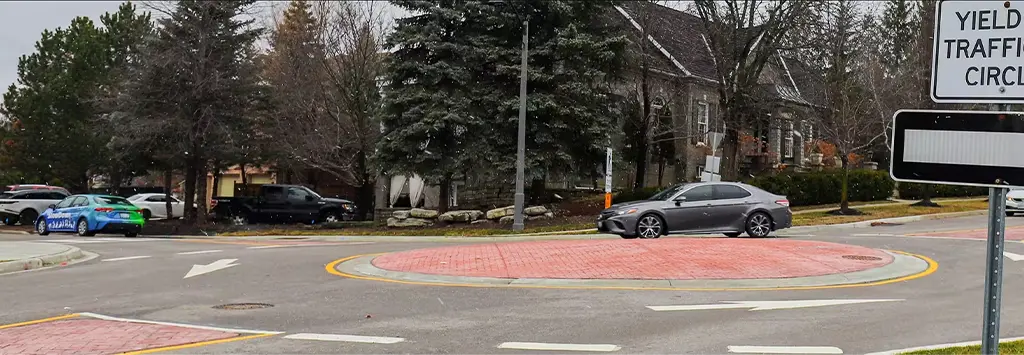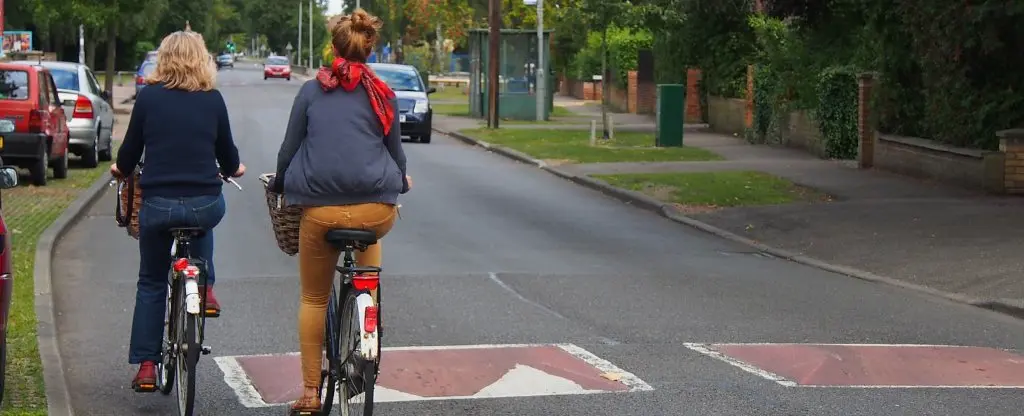How can Traffic Calming Devices Improve Traffic Conditions?
The number of road accidents and associated fatalities is growing in big cities, increasing the need to use appropriate traffic calming devices and make better traffic rules.
Traffic control devices effectively improve pedestrian safety and traffic safety in various places, including city streets, roadways, parking lots, and private roads. They come in numerous shapes, designs, colors, and materials to give people different options based on their particular needs.
For more information, you can discover here: What are the Famous Traffic Calming Devices?
Popular examples of commonly used traffic calming devices are speed bumps, speed humps, speed cushions, traffic signals, traffic circles, and speed breakers.
They help improve traffic conditions in multiple ways. Enlisted below are the key points that indicate how they make roads safe for all.

Discover here our full range of Speed Cushions!
Slow down vehicles’ speed
Most traffic calming measures have a raised surface that forces drivers to reduce their speed to drive over them safely. It helps slow down speeding vehicles and prevent potential accidents.
Speed bumps are used on roads where traffic should be around 10 miles per hour (mph), while speed humps are used where speeds up to 15 mph are required. On the other hand, speed cushions are used on traffic lanes where speed needs to be up to 20 mph.
Managing vehicular speed becomes very important for roads where pedestrians and vehicles exist close to each other. These tools give drivers enough time to slow down before they collide with another vehicle, a pedestrian, or a nearby object.

Divide different vehicles or bicycles into different lanes
When all kinds of vehicles, including buses, cars, cycles, etc., drive in the same traffic lane, their risk of colliding with each other rises because each vehicle drives at its own speed and has its unique size. This is where traffic-management devices come to help.
They create a boundary between lanes to ensure drivers do not cross their particular lane and mix with other vehicles. They also help maintain safe parallel spacing between vehicles.
Such devices include rumble strips, wheel stops, pavement markings, road markings, bollards, traffic cones, and traffic barriers.
Pavement markings are made with bright colors like white and yellow to mark the boundary of different lanes. Rumble strips are small obstacles installed in a lane across the length of a road. They are reflective and create vibration in vehicles when they drive over them to cross the line.
Wheel stops are mainly used in parking spaces to create a barrier between parking spaces of different vehicles. Traffic barriers are large structures that come in various sizes and shapes. They also help create a boundary between different traffic lanes.
Get in touch
The Speed Cushions Factory is a leading manufacturer of rubber speed cushions located in Qingdao, China.
Feel free to contact us!
We are always here to help!
Qingdao, Shandong Province, China.
sales@speed-cushion.com
Avoid traffic congestion
Traffic congestion has become a common problem in big cities, particularly in the morning or during office hours. It increases the emergency response time of fire trucks, ambulances, and police vans. Similarly, it causes unwanted delays, tension, and frustration among the general public.
You can easily avoid this issue with the help of traffic calming devices like speed cushions, roundabouts, speed signs, traffic control signs, etc. These devices slow down vehicles and allow them to move at an appropriate speed without blocking the movement of other vehicles.
Speed cushions and speed bumps divert vehicles from busy routes like school zones to routes that are not so busy. Similarly, signs and markings inform drivers about speed limits and traffic conditions in the coming area, which helps drivers change their route before they reach a busy road.

The quality of the local environment can also be potentially improved
Another worth mentioning way speed control tools improve traffic conditions is by making neighborhoods, city streets, crosswalks, and bike lanes safe for all, including bicyclists, cyclists, motorists, and pedestrians.
Traffic calming techniques make outdoor areas safe for people, encouraging pedestrian and bicycling activities. When people feel safe on roads, they choose cycling (which does not require fuel) over fuel-burning vehicles to travel around. It helps protect the environment and reduce air pollution.
They also maintain traffic flow and decrease the time cars spend on streets or roads. As a result, less fuel is burnt, and fewer air pollutants are produced. It will help create a better society for future generations.

Other benefits of traffic control devices
In addition to improving traffic conditions, these devices offer many other benefits, such as:
- They organize the movement of traffic and maintain order on the road. It eventually helps prevent traffic congestion and reduce frustration among drivers.
- They improve safety on roads which helps reduce the frequency and severity of accidents. The number of vehicle-to-vehicle and vehicle-to-pedestrian collisions decreases; hence, many precious lives are saved annually.
- The Department of Transportation and the Federal Highway Administration use them on roads to make people follow traffic rules even without traffic police.
- They make street parking and indoor parking well-organized and maintained. Parked vehicles have an appropriate distance between them. People do not have trouble moving their vehicles around.
What are the most effective traffic-calming devices?
Municipalities use numerous traffic calming devices. Some of these are:
Speed cushions: These are the raised elongated structures with a width longer than standard cars’ width but smaller than emergency vehicles’ width. Two or more speed cushions are spread across the width of a road. They slow down cars but allow long-axle vehicles to drive through wheel cutouts without speed reduction.
Wheel stops: These are used in parking spots to prevent the unwanted movement of vehicles. They create a boundary around a parking space and inform the driver where he/she can park a vehicle safely without hitting any other vehicle or parking the vehicle in a pedestrian zone.
Roundabouts: These are circular intersections that slow down vehicles entering and leaving an intersection from different directions.
Traffic signs and markings: Many signs and markings are used on roads and streets. They are used to give special instructions to foot and vehicular traffic. For instance, a warning sign may inform people of the presence of a traffic calming device ahead, a construction site sign will tell oncoming traffic about the construction work happening on the road, and a speed limit sign will tell traffic what the speed limit is in a particular area.

Conclusion
Traffic calming devices are very helpful in improving traffic conditions on roads, parking lots, streets, traffic intersections, and slow zones. They control the movement of vehicles, manage their speed, and help them stay organized. These tools have made roads safe for people, encouraging bicycling activity.
If your neighborhood does not have these tools and the number of traffic accidents increases, you should request your local municipality to install speed control tools to enhance road safety.
Speed cushions can slow down cars in your area without influencing the speed of emergency vehicles. They also allow rainwater movement and drainage. Bicyclists and cyclists can move through their wheel cutouts without decreasing their speed. Public transport also moves without reducing its speed, which helps it reach the destination on time.
Get in touch
The Speed Cushions Factory is a leading manufacturer of rubber speed cushions located in Qingdao, China.
Feel free to contact us!
We are always here to help!
Qingdao, Shandong Province, China.
sales@speed-cushion.com
You might be interested in the below articles: